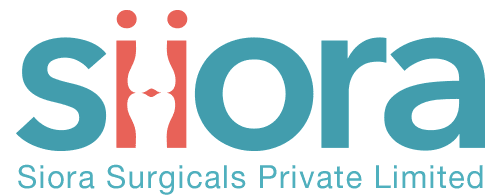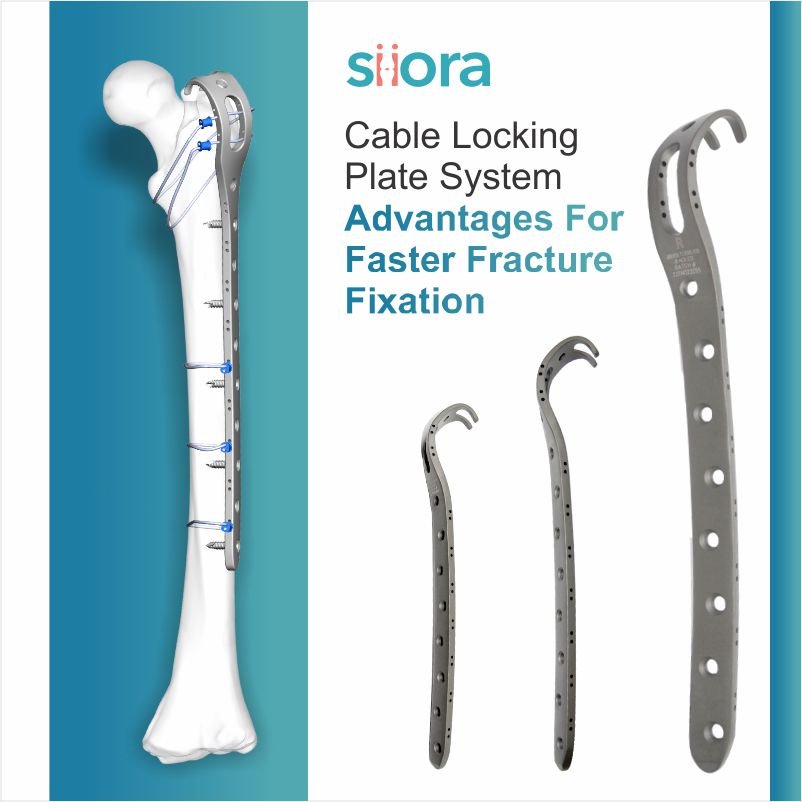Fractures are a common medical condition that affects millions of people worldwide each year. While minor fractures can often be treated with simple casting, more complex fractures sometimes require advanced surgical interventions. One such technique is External Fixation, which plays a critical role in modern orthopedic treatments. This blog provides a comprehensive overview of external fixation for fractures, exploring its procedures, types, and benefits.
What Is External Fixation?
External fixation is a surgical technique used to stabilize fractured bones by attaching an external device to the affected limb. Unlike internal fixation methods, which involve placing orthopedic screws, plates, or rods inside the body, external fixation stabilizes the fracture from the outside. The procedure is particularly useful in cases of severe trauma, open fractures, or when immediate internal fixation is not advisable.
What is the Procedure of External Fixation?
The external fixation procedure involves several key steps:
Preparation
The patient undergoes a thorough preoperative evaluation, including imaging studies such as X-rays or CT scans, to assess the extent of the fracture.
Anesthesia
The procedure is typically performed under general or local anesthesia.
Pin Placement
Pins or wires are inserted into the bone above and below the fracture site. These pins are placed through small incisions in the skin.
Fixator Assembly
The external frame, made of metal or carbon fiber, is attached to the pins. This frame holds the bones in proper alignment, allowing them to heal.
Postoperative Care
After the procedure, the External Fixator remains in place for several weeks or months, depending on the severity of the fracture and the healing progress.
The procedure is minimally invasive and can be adjusted during the healing process to ensure proper alignment of the bones.
What Are the Types of External Fixators?
External fixators come in various designs to cater to different types of fractures and patient needs. Let’s delve into the primary External Fixator types:
Uniplanar External Fixator
This type of fixator operates in a single plane and is ideal for straightforward fractures. The uniplanar external fixator is lightweight and easy to manage, making it suitable for less complex fractures of the limbs.
Multiplanar External Fixator
Designed for more complex fractures, the multiplanar external fixator provides stability across multiple planes. It is particularly useful in cases where fractures occur at multiple angles or involve joints.
Hybrid External Fixator
A combination of uniplanar and circular fixators, the hybrid external fixator offers versatility and is often used for challenging fractures near joints or in cases with soft tissue damage. This type balances rigidity and flexibility, making it a preferred choice for complicated cases.
Each type of fixator serves a specific purpose, and the choice depends on factors such as fracture location, complexity, and patient health.
What Are the Benefits of External Fixation?
External fixation offers several advantages over traditional internal fixation methods:
Minimally Invasive
The procedure requires smaller incisions, reducing the risk of infection and promoting faster recovery.
Adjustability
The external frame can be adjusted postoperatively to ensure optimal alignment of the bones.
Versatility
It is suitable for a wide range of fractures, including open and infected fractures.
Temporary Solution
In some cases, external fixation serves as a temporary measure before transitioning to internal fixation or other treatment options.
These benefits make external fixation a valuable tool in the arsenal of orthopedic surgeons.
What Are the Indications for External Fixation of Fractures?
The external fixation of fracture is recommended in several scenarios:
Open Fractures
When the skin and soft tissues are severely damaged, external fixation provides stabilization without interfering with wound management.
Severe Trauma
In cases of polytrauma, external fixation allows quick stabilization of fractures while addressing other life-threatening injuries.
Infected Fractures
External fixation minimizes the risk of spreading infection compared to internal methods.
Paediatric Fractures
For children, external fixation is often preferred to avoid potential complications associated with internal implants.
Joint Reconstruction
Certain joint injuries require external fixation to maintain alignment during the healing process.
What Are the Challenges and Risks Associated with External Fixation?
Despite its many benefits, external fixation is not without challenges. Common risks include:
Pin Site Infections
Proper hygiene and care are essential to prevent infections at the pin insertion sites.
Discomfort
The external frame can be bulky and uncomfortable for some patients.
Delayed Union
In some cases, bone healing may take longer than expected.
Soft Tissue Irritation
The pins and frame can sometimes irritate surrounding soft tissues.
With proper care and monitoring, most of these issues can be managed effectively.
How to Care External Fixators?
Patients with external fixators must follow strict care guidelines to ensure a smooth recovery:
Pin Site Cleaning
Regular cleaning of the pin sites with antiseptic solutions reduces the risk of infection.
Avoiding Heavy Activities
Patients should avoid strenuous activities that might strain the fixator.
Follow-Up Appointments
Regular check-ups with the orthopedic surgeon help monitor healing and make necessary adjustments to the fixator.
Following these guidelines will significantly improve the success of the treatment.
Recent Advances in External Fixation
Technological advancements have improved the way Orthopedic Injuries are treated. Modern designs focus on improving patient comfort and healing outcomes. For instance, lighter materials such as carbon fiber reduce the weight of the fixator, while computer-assisted techniques enable precise placement and adjustments.
Additionally, the integration of digital monitoring systems allows real-time tracking of bone healing, enabling surgeons to make timely interventions when needed.
Conclusion
External fixation is a versatile and effective technique for treating complex fractures. By stabilizing bones externally, it offers numerous benefits, including minimal invasiveness, adjustability, and suitability for a wide range of conditions. Understanding the different types of external fixators like uniplanar external fixators, multiplanar external fixators, and hybrid external fixators can help patients and healthcare providers make informed decisions about the best course of treatment.
While external fixation presents challenges, proper care and advancements in technology have significantly improved outcomes. Whether used as a temporary or definitive solution, external fixation remains a cornerstone of modern fracture management, helping countless patients regain mobility and quality of life.
Siora Surgicals Pvt. Ltd. is a pioneer company that manufactures and supplies a huge range of CE-certified trauma implants and instruments including External Fixator Systems. The company has been operating for over 3 decades and has established a huge distributor base spanning 50+ countries. Above all, Siora is also looking for a reliable Orthopedic Implant Distributor in USA to expand its global presence.








